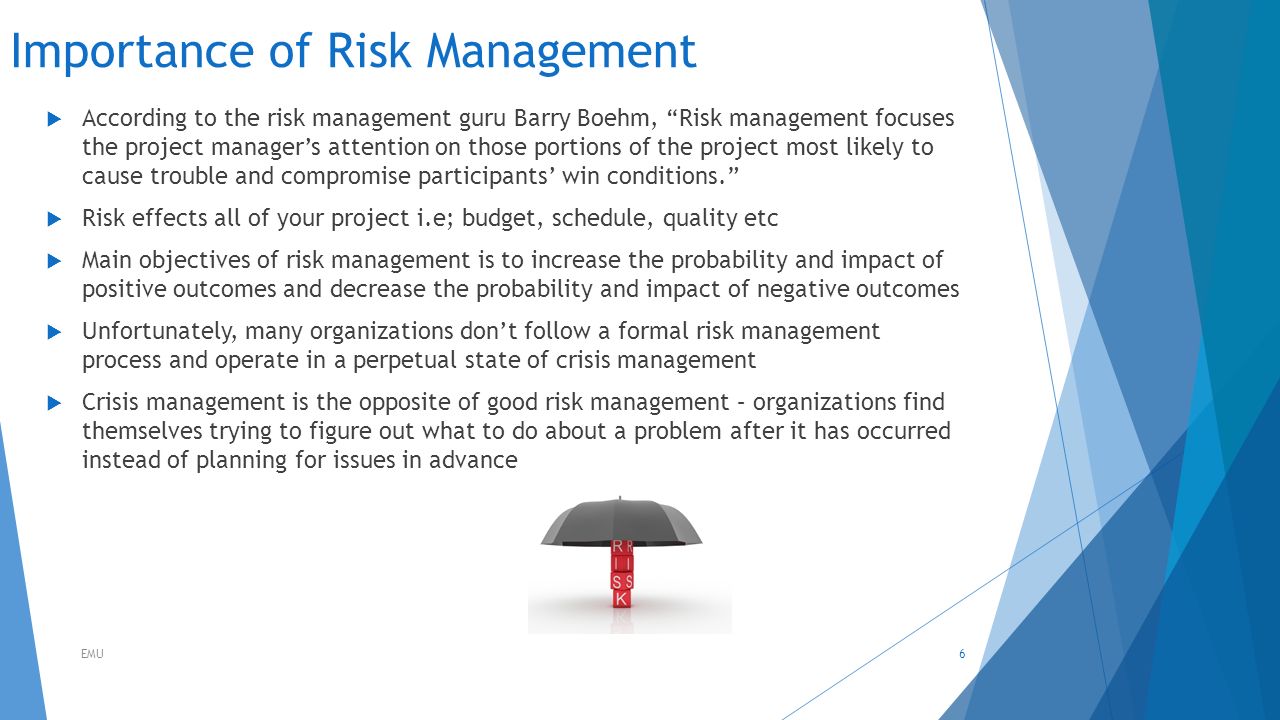The Critical Significance of Risk Management in Achieving Business Goals
In the swiftly progressing organization landscape, the ability to navigate unpredictability has come to be a critical. This is where Risk Management steps in, offering a structured strategy to determining, examining, and mitigating potential obstacles to progress. It's greater than simply a safety procedure - it's a strategic device, cultivating durability and innovation. As we check out the critical role of Risk Management in attaining organizational goals, one can not wonder but aid: just how does this translate right into real-world success?
Understanding the Principle of Risk Management in Business

The Integral Duty of Risk Management in Strategic Planning
Incorporating Risk Management right into calculated planning acts as a secure for organizations, securing their lasting plans with a solid foundation of readiness and durability. Risk Management provides a framework for anticipating uncertainties and devising suitable actions, guaranteeing the organization's survival and prosperity even in the face of difficulty. By including Risk Management into strategic preparation, organizations can transform these uncertainties right into chances for development and technology.

Strategies for Identifying, Assessing, and Prioritizing Risks
The process begins with Risk identification, using tools such as SWOT evaluation, which assists in pinpointing prospective dangers and opportunities. Next, Risk assessment is conducted to determine the potential influence and chance of each Risk. Threats are prioritized based on their potential influence and likelihood, allowing organizations to focus their resources on high-priority threats.
Guarding Organizational Operations Via Effective Risk Management
In the business landscape filled with unpredictabilities, effective Risk Management plays a crucial function in protecting organizational procedures. It works as a safety shield, mitigating the unfavorable impacts of possible dangers and making sure the smooth performance of all procedures. By determining and analyzing possible hazards, Risk Management enables organizations to develop durable contingency strategies. This index preventative method help in keeping operational stability, also when faced with unforeseen scenarios. Basically, Risk Management is the lifeline that keeps the business procedures afloat amidst rough waters. It guarantees not only the survival but the sustainable development of a company, making it a vital tool in accomplishing organization objectives. Thus, companies should purchase comprehensive Risk Management great site approaches to secure their operations.

Transforming Prospective Threats to Opportunities: The Power of Risk Management
A proactive strategy to take the chance of Management includes identifying, examining, and focusing on risks to create techniques that turn them into possible advantages. Therefore, by leveraging the power of Risk Management, organizations can not just guard their operations but also stimulate growth and accomplish their goals in an uncertain service atmosphere.
Case Studies: Success Stories of Risk Management Driving Service Objectives
Effective implementation of Risk Management strategies has actually produced excellent results in different services, underscoring the merits of this method. International firms like Microsoft and Google, for instance, have leveraged Risk Management to decrease risks and make use of opportunities, driving their business goals onward. These examples illustrate exactly how effective Risk Management can not only guide organizations clear of potential mistakes yet also direct them in the direction of their strategic goals.
Final thought
To conclude, Risk Management is fundamentally vital in attaining organizational goals. It uses an organized approach to recognizing, evaluating, and addressing potential threats and opportunities. Greater than just mitigating threats, it also promotes advancement, durability, and lasting development. By integrating Risk Management into tactical planning, companies can better navigate uncertainties, protect operations, and capitalise on opportunities, thereby aligning with long-term purposes.
At its core, Risk Management is the procedure of identifying, assessing, and addressing possible dangers that original site might negatively influence an organization's operations or purposes. Next, Risk assessment is performed to establish the potential impact and possibility of each Risk. Risks are focused on based on their prospective influence and likelihood, enabling organizations to focus their resources on high-priority dangers. By identifying and evaluating potential hazards, Risk Management enables companies to establish robust backup plans. A positive approach to run the risk of Management includes determining, examining, and focusing on dangers to develop approaches that turn them right into possible benefits.